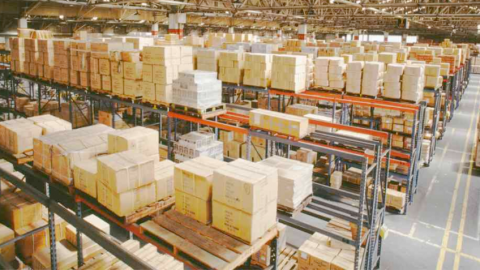
Illustration (Source: Internet)
Today, disruptive technologies have allowed a new breed of warehouse management systems (WMS) to evolve, removing the constant need for human intervention.
Instead of requiring human operators, most machinery can manage itself. Rather than working on the ‘man-to-goods’ principle, in which human employees ferry products from place to place, automated systems and invisible connectivity are steering warehouse operations towards ‘goods-to-man’. The results are lower labour costs, a safer working environment, and more efficient supply chain management. Here, we list 5 effective storage solutions to apply new scientific and technical advances:
1) Robots
The first and most obvious technology that has changed warehouse operation, visibly speaking, is the integration of robots. Robots can do heavy duty manual tasks that humans wouldn’t necessarily be able to do, and they don’t get tired or ill. In 2014, Amazon bought US robotics manufacturer Kiva for $775m. Two years later, the ecommerce behemoth began to install the box-shaped bots at their warehouses. The robots are primarily focused on picking and speeding up the pace of deliveries by carrying entire shelves to human packers.
2) RFID
Scanning techniques have been vastly improved by RFID. The tag tracking technology is gradually becoming more sophisticated, and now almost anything at all can be fitted with a readable RFID tag. These tags can be used to feed information between specific parts of the production line, taking the guesswork out of supply chain management. Inditex, the owner of high street fashion brand Zara, tracks items from the warehouse to the store, giving logistics centres more visibility over the shipping process in order to reduce mistakes.
3) Voice
Adding voice guidance and response capabilities to warehouse management systems allows for instant communication between humans and machines. A supervisor might use voice, for example, to find out the status of a robotic arm. Instead of going to check the arm themselves or sending a typed command to another employee, the question could be answered almost immediately by a specific health report collected straight from the arm in real time.
4) Cloud
Warehouses are hubs of data, drawing information from multiple sources and distributing it through various channels. With cloud storage, it’s much cheaper and easier to keep track of this information. According to Oracle, Oracle Warehouse Management Cloud offers improved inventory and shipment accuracy, total inventory visibility, and multichannel support so that customers can buy, receive and return however and wherever they choose.
5) Artificial intelligence
Electronic data interchange (EDI) is vital to all warehouse processes, from purchase orders to inventory planning. EDI enables the flow of information between systems, facilitating collaboration both within the warehouse and with external data sources. Without an AI layer, this data would remain untapped.
What intelligent systems are doing, in essence, is advanced data analytics. For warehouses, one of the major benefits of artificially intelligent data management is predictive analytics. For example, if a forklift begins to show signs of wear and tear, an alert can be automatically issued to call in a mechanic before a problem arises. This goes hand in hand with prescriptive analytics, which identifies a problem and then offers a solution.
Thereby, the error rate and risk in the storage process will be reduced to a minimum, significant savings in repair costs, improved productivity and release of labor resources for heavy and repeat work.